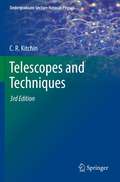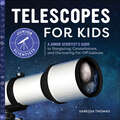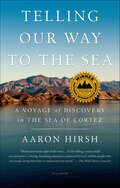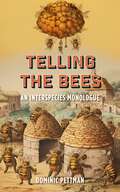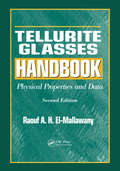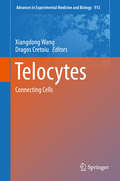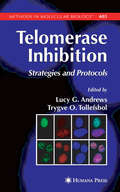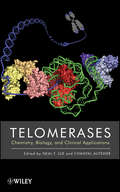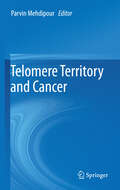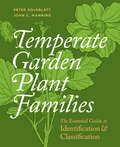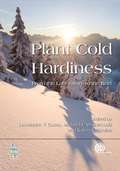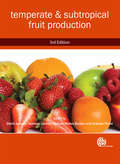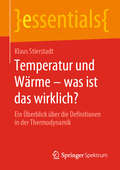- Table View
- List View
Telescopes and Techniques
by C. R. Kitchin"Telescopes and Techniques" has proved itself in its first edition, having become probably one of the most widely used astronomy texts, both for numerate amateur astronomers and for astronomy and astrophysics undergraduates. The first and second editions of the book were widely used as set texts for introductory practical astronomy courses in many universities. This book guides the reader through the mathematics, physics and practical techniques needed to use telescopes (from small amateur models to the larger instruments installed in many colleges) and to observe objects in the sky. Mathematics to around Advanced Placement standard (US) or A level (UK) is assumed, although High School Diploma (US) or GCSE-level (UK) mathematics plus some basic trigonometry will suffice most of the time. Most of the physics and engineering involved is described fully and requires no prior knowledge or experience. This is a 'how to' book that provides the knowledge and background required to understand how and why telescopes work. Equipped with the techniques discussed in this book, the observer will be able to operate with confidence his or her telescope and to optimize its performance for a particular purpose. In principle the observer could calculate his or her own predictions of planetary positions (ephemerides), but more realistically the observer will be able to understand the published data lists properly instead of just treating them as 'recipes.' When the observer has obtained measurements, he/she will be able to analyze them in a scientific manner and to understand the significance and meaning of the results. "Telescopes and Techniques, 3rd Edition" fills a niche at the start of an undergraduate astronomer's university studies, as shown by it having been widely adopted as a set textbook. This third edition is now needed to update its material with the many new observing developments and study areas that have come into prominence since it was published. The book concentrates on the knowledge needed to understand how small(ish) optical telescopes function, their main designs and how to set them up, plus introducing the reader to the many ways in which objects in the sky change their positions and how they may be observed. Both visual and electronic imaging techniques are covered, together with an introduction to how data (measurements) should be processed and analyzed. A simple introduction to radio telescopes is also included. Brief coverage of the most advanced topics of photometry and spectroscopy are included, but mainly to enable the reader to see some of the developments possible from the basic observing techniques covered in the main parts of the book.
Telescopes for Kids: A Junior Scientist's Guide to Stargazing, Constellations, and Discovering Far-Off Galaxies (Junior Scientists)
by Vanessa ThomasExplore the mysteries of the night sky with the Junior Scientists series for kids ages 6 to 9Scan the skies for 40 incredible sights with a book that shows budding scientists how to use a telescope for kids. You'll learn how to choose a telescope, set it up, and seek out the wonders of the Northern Hemisphere, from the Big Dipper to the Whirlpool Galaxy.Detailed visual guides—Illustrations of each star, planet, and more make them easier to spot— and once you can identify the major ones, you can use them to find others with any telescope for kids.Outer space school—Discover what time of year it's easiest to see different objects in the sky, the life cycle of a star, how galaxies are cataloged, and more!Fun facts—Find out where the constellations get their names and why looking at the stars means you're actually looking back in time!See what's happening out in the cosmos with this guide to making the most of a telescope for kids.
Telling Genes: The Story of Genetic Counseling in America
by Alexandra Minna SternThe history of contemporary genetic counseling, including its medical, personal, and ethical dimensions.Winner of the CHOICE Outstanding Academic Title of the Choice ACRLFor sixty years genetic counselors have served as the messengers of important information about the risks, realities, and perceptions of genetic conditions. More than 2,500 certified genetic counselors in the United States work in clinics, community and teaching hospitals, public health departments, private biotech companies, and universities. Telling Genes considers the purpose of genetic counseling for twenty-first century families and society and places the field into its historical context.Genetic counselors educate physicians, scientific researchers, and prospective parents about the role of genetics in inherited disease. They are responsible for reliably translating test results and technical data for a diverse clientele, using scientific acumen and human empathy to help people make informed decisions about genomic medicine.Alexandra Minna Stern traces the development of genetic counseling from the eugenics movement of the early twentieth century to the current era of human genomics. Drawing from archival records, patient files, and oral histories, Stern presents the fascinating story of the growth of genetic counseling practices, principles, and professionals.
Telling Our Way to the Sea: A Voyage of Discovery in the Sea of Cortez
by Aaron HirshA luminous and revelatory journey into the science of life and the depths of the human experienceBy turns epic and intimate, Telling Our Way to the Sea is both a staggering revelation of unraveling ecosystems and a profound meditation on our changing relationships with nature—and with one another.When the biologists Aaron Hirsh and Veronica Volny, along with their friend Graham Burnett, a historian of science, lead twelve college students to a remote fishing village on the Sea of Cortez, they come upon a bay of dazzling beauty and richness. But as the group pursues various threads of investigation—ecological and evolutionary studies of the sea, the desert, and their various species of animals and plants; the stories of local villagers; the journals of conquistadors and explorers—they recognize that the bay, spectacular and pristine though it seems, is but a ghost of what it once was. Life in the Sea of Cortez, they realize, has been reshaped by complex human ideas and decisions—the laws and economics of fishing, property, and water; the dreams of developers and the fantasies of tourists seeking the wild; even efforts to retrieve species from the brink of extinction—all of which have caused dramatic upheavals in the ecosystem. It is a painful realization, but the students discover a way forward. After weathering a hurricane and encountering a rare whale in its wake, they come to see that the bay's best chance of recovery may in fact reside in our own human stories, which can weave a compelling memory of the place. Glimpsing the intricate and ever-shifting web of human connections with the Sea of Cortez, the students comprehend anew their own place in the natural world—suspended between past and future, teetering between abundance and loss. The redemption in their difficult realization is that as they find their places in a profoundly altered environment, they also recognize their roles in the path ahead, and ultimately come to see one another, and themselves, in a new light.In Telling Our Way to the Sea, Hirsh's voice resounds with compassionate humanity, capturing the complex beauty of both the marine world he explores and the people he explores it with. Vibrantly alive with sensitivity and nuance, Telling Our Way to the Sea transcends its genre to become literature.
Telling the Bees: An Interspecies Monologue
by Dominic PettmanIn a bid to wean himself off Facebook and Twitter, media scholar and cultural theorist Dominic Pettman decided to revive an ancient custom. He decided to tell the local bees of his thoughts, theories, musings, and meditations. The result was an apian journal that parses the daily news and the routines of modern life in a more sustained and reflective way than the Pavlovian posts to which we are so addicted.The account that emerges from Pettman’s regular discussion with the bees forms a compelling portrait of the tumultuous period running from the Fall of 2019 to New Year’s Eve, 2022. What began as a reflection on the traumatic effects of an “unprecedented” presidency soon evolved into a real-time response to the equally extraordinary events of the pandemic and its aftermath. One key concern that emerges from Pettman’s ongoing discussion with the bees is the extent to which, thanks to the alienating effects of neoliberalism, we were already engaged in an advanced form of social distancing long before anyone had heard of COVID. Other key themes include education, human-animal relations, climate change, mediated intimacy, attention ecologies, collective memory, slow violence, the self-fulfilling prophecy that is New York City, the never-ending end of history, and the mundane strategies we share in a bid to forge on, despite the accumulating challenges of the twenty-first century. Telling the Bees is an invitation to rediscover the art of reflection and a profound meditation on human connection, alienation, and our collective yearning for intimacy in an age of distance. Through what Pettman describes as an "interspecies monologue," readers are treated to a unique perspective on navigating the complexities of the twenty-first century, inspired by the ingenuity and resilience of our natural cohabitants.
Telling the Evolutionary Time: Molecular Clocks and the Fossil Record
by Philip C. J. Donoghue M. Paul SmithDetermining the precise timing for the evolutionary origin of groups of organisms has become increasingly important as scientists from diverse disciplines attempt to examine rates of anatomical or molecular evolution and correlate intrinsic biological events to extrinsic environmental events. Molecular clock analyses indicate that many major groups
Tellurite Glass Smart Materials: Applications in Optics and Beyond
by Raouf El-MallawanyThis book provides expert coverage of the physical properties of new non-crystalline solids—tellurite glass smart materials—and the latest applications of these materials, offering insights into innovative applications for radiation shielding, energy harvesting, laser devices, and temperature sensing, among others. In particular, there is a focus on optics, energy conversion technology and laser devices, structural and luminescence properties for laser applications, optothermal and optical properties in the presence of gold nanoparticles, and lanthanide doped zinc oxyfluoro-tellurite glass as a new smart material.Additional chapters address the properties and uses of tellurite glasses in optical sensing, the significance of Near Infrared (NIR) emissions, solar cells, solar energy harvesting, luminescent displays, and the development of bioactive-based tellurite-lanthanide (Te-Ln) doped hydroxyapatite composites for biomedical applications.As the world’s reliance on glass increases, this book serves as a link between the latest findings on tellurite glasses and real-world technological advancement. Academic researchers and industry professionals alike will find this book a useful resource in keeping abreast of recent developments in the field.
Tellurite Glasses Handbook: Physical Properties and Data, Second Edition
by Raouf A.H. El-MallawanyTellurite Glasses Handbook: Physical Properties and Data, Second Edition covers the current dominant physical properties of this prototype glass system. Focusing on thermal, elastic, acoustic, electrical, and optical properties, this second edition incorporates the latest scientific data and up-to-date applications of tellurite glass. New Topics in
Telocytes
by Xiangdong Wang Dragos CretoiuThis book elucidates the genetic, biological, morphological and functional aspects of telocytes. Telocytes are a recently defined type of interstitial (stromal) cells, with very long (tens to hundreds of micrometres) and very thin prolongations (mostly below the resolving power of light microscopy). The book describes the presence of telocytes in various organs and tissues, details their morphological characteristics, explores their genomic and proteomic profiles, puts forward preclinical evidence of their application, and discusses their potential in the context of clinical therapeutics. As such, it offers a valuable guide for biologists and clinicians alike. Dr. Xiangdong Wang is a distinguished Professor of Medicine. He is Director of the Shanghai Institute of Clinical Bioinformatics, Executive Director of the Clinical Science Institute at Fudan University Zhongshan Hospital, Shanghai, China; Dr. Dragos Cretoiu is an Associate Professor of Pathology at the Department of Cellular and Molecular Medicine, Carol Davila University of Medicine and Pharmacy, Bucharest.
Telomerase Inhibition
by Trygve O. Tollefsbol Lucy AndrewsThis volume presents a compendium of the most recent and advanced methods applied to the rapidly expanding field of telomerase inhibition. The techniques described provide the researcher with a diverse and comprehensive set of tools for the study of telomerase inhibition. The volume is aimed at biochemists, molecular biologists, cancer researchers, and geneticists.
Telomerases
by Neal Lue Chantal AutexierThis book is a comprehensive and up-to-date review and evaluation of the contemporary status of telomerase research. Chapters in this volume cover the basic structure, mechanisms, and diversity of the essential and regulatory subunits of telomerase. Other topics include telomerase biogenesis, transcriptional and post-translational regulation, off-telomere functions of telomerase and the role of telomerase in cellular senescence, aging and cancer. Its relationship to retrotransposons, a class of mobile genetic elements that shares similarities with telomerase and serves as telomeres in selected organisms, are also reviewed.
Telomere Territory and Cancer
by Parvin MehdipourTiming, racing, combating, struggling and targeting are some actions through which cellular fate could be reflected and evaluated. Interaction between cell territory and environment occur during pre-embryonic, fetal development, and post-natal periods. What the researchers observe as the outcome of telomeres behavior is only the peak of an ice mountain within a stormy ocean. Cellular life depends on programmed behavior of telomeres, capable to surprise the cells. Telomeres provide an introduction to the history of our cells which govern the quality of life and status of health. Telomeres as the cooperative territory are capable of stabilizing the chromosomal territory. The status of telomeres reflects the key information, announcing the real age of individuals, and may be a valuable marker for prognosis and predicting cancer. Telomere territory is characterized with a multi-disciplinary manner. Therefore, this book is aimed to offer a wide range of chapters, hoping to be useful for diverse audiences, including hematologists-oncologists, radiotherapists, surgeons, cancer researchers, and all the sectors who affect the macro- and micro- environmental domains. Finally, telomeres are sensitive, cooperative, and trustable targets. It is worth to state that 'telomeres are messengers of NATURE', let's to know them as they are.
Telomeres and Telomerase
by Michael J. Thompson John A. DoubleJohn A. Double and Michael J. Thompson have collected a critically important series of novel and essential techniques for studying telomeres and telomerase. These readily reproducible methods provide cutting-edge tools to identify, measure, and analyze telomeres, to determine telomerase expression at the RNA level, to determine telomerase activity, and to detect potential modifiers of this activity. The techniques for assaying telomerase activity range from standard radiological TRAP assays to nonradioactive methods, from non PCR-based methods to techniques using real-time PCR. Telomeres and Telomerase: Methods and Protocols provides the core array of productive techniques needed today to develop telomerase inhibitors or diagnostic/prognostic telomerase markers.
Telomeres and Telomerase
by Zhou SongyangNew and rapid advances in technology have equipped us with a variety of tools and platforms to ask fundamental questions of telomere regulation and have allowed investigators to carry out experiments using diverse model systems. For example, proteomic, genomic, and molecular approaches have afforded us unprecedented insight into the complex protein interaction networks at work on the telomere chromatin and the detailed information regarding telomere dynamics in response to stress or stimuli. Telomeres and Telomerase: Methods and Protocols, Second Edition builds upon the telomerase assays featured in the popular first edition to encompass many different assays that allow investigators to query the function of telomere proteins and the responses of the telomere DNA, including detailed examinations of biochemical, molecular, and proteomic approaches. Written in the highly successful Methods in Molecular BiologyTM series format, chapters include introductions to their respective topics, lists of the necessary materials and reagents, step-by-step, readily reproducible laboratory protocols, and expert tips on troubleshooting and avoiding known pitfalls. Authoritative and practical, Telomeres and Telomerase: Methods and Protocols, Second Edition serves as an ideal, up-to-date guide for investigators further pursing this vital field of study.
Telomeres and Telomerase
by Zhou SongyangNew and rapid advances in technology have equipped us with a variety of tools and platforms to ask fundamental questions of telomere regulation and have allowed investigators to carry out experiments using diverse model systems. For example, proteomic, genomic, and molecular approaches have afforded us unprecedented insight into the complex protein interaction networks at work on the telomere chromatin and the detailed information regarding telomere dynamics in response to stress or stimuli. Telomeres and Telomerase: Methods and Protocols, Second Edition builds upon the telomerase assays featured in the popular first edition to encompass many different assays that allow investigators to query the function of telomere proteins and the responses of the telomere DNA, including detailed examinations of biochemical, molecular, and proteomic approaches. Written in the highly successful Methods in Molecular Biology(tm) series format, chapters include introductions to their respective topics, lists of the necessary materials and reagents, step-by-step, readily reproducible laboratory protocols, and expert tips on troubleshooting and avoiding known pitfalls. Authoritative and practical, Telomeres and Telomerase: Methods and Protocols, Second Edition serves as an ideal, up-to-date guide for investigators further pursing this vital field of study.
Telomeres, Diet and Human Disease: Advances and Therapeutic Opportunities
by Amelia Marti Guillermo ZalbaThe maintenance of telomeres—repetitive sequences at the end of chromosome—is essential to health. Dysfunction in telomere maintenance pathways plays a role in aging, cancer, atherosclerosis and other diseases. This has led to telomere maintenance as a prime target for patient therapies. This book describes the advances in telomere research as it applies to human health and especially how lifestyle and dietary factors could modify the telomerase maintenance process. The book examines the mechanisms involved, the primary of which are oxidative stress and the role of sirtuins, and how they can be modified by dietary patterns such as Mediterranean diet.
Telomeres: Chromosome Sentinels
by Carole SaintoméTelomeres are specialized DNA–protein structures that protect the ends of chromosomes to maintain their integrity. They are chromosome sentinels. This book, written by multiple authors, presents current knowledge and the most recent discoveries relating to telomeres. The first chapters describe telomere structures (DNA and proteins), organization, dynamics and replication in a range of organisms including ciliates, yeast and mammals. The following chapters cover mechanisms that maintain telomere length involving telomerase and Alternative Lengthening Telomeres (ALT) mechanisms. Interestingly, telomeres are transcribed into repetitive RNA called TERRA (Telomeric repeat-containing RNA), the state of the art regarding mammalian telomere transcripts is presented here. Two chapters are dedicated to the description of how telomere biology impacts the development of cancer and how their disfunctions induce telomeropathies (telomere biology disorders). Finally, the book ends with a chapter presenting telomere and telomerase targeting agents as potential anticancer agents, a promising therapeutic approach.
Tempature-Programmed Reduction for Solid Materials Characterization (Chemical Industries)
by Alan JonesThis guide discusses the principles and theory of temperature-programmed reduction (TPR) used for sold materials characterization. It describes the recent trends, instrumentation needed, as well as the application of TPR in heterogeneous catalysis, materials science, and analytical chemistry.
Temperate Garden Plant Families: The Essential Guide to Identification and Classification
by Peter Goldblatt John C. ManningLearn how to identify the most important temperate plant families Based on the most up-to-date research, Temperate Garden Plant Families spans the spectrum from Acanthaceae (the acanthus family) to Zingiberaceae (the ginger family), and reflects the current scientific consensus about the family status of the most popular garden genera. Introductory information includes an overview of family classification, plant nomenclature, and plant morphology. The comprehensive A–Z of plants includes profiles that include information on the number of species and genera, plant form, flowers, fruit, and a short description. Each profile is illustrated with color photographs and botanical illustrations. Botanists, horticulturists, gardeners, and students will all welcome this authoritative yet accessible reference.
Temperate Nuts
by Shabir Ahmad Mir Mohammad Maqbool Mir Umar Iqbal Munib Ur RehmanThis book focuses on the production technology of temperate nuts. It explores cultivar and plant improvement, development and selection of rootstocks, plant–water relations and irrigation, canopy architecture, and postharvest packaging of nut fruits. It also deals with organic approaches, biotechnological interventions, diseases, and pest management. Contributing authors address nut fruits such as walnut, pecan nut, chestnut, and hazel nut on different recent aspects. The development achieved in the fruit sector is indicative of the fact that there is growing demand of fruit produce. Temperate nuts with health benefits and market acceptability have best sources of fat, fiber, protein, and mineral. They provide dietary fiber, potassium, and a variety of health-protective bioactive compounds. Apart from the health benefits, production of temperate nuts improves the economy of the country as these are very good source of income and employment. In addition, there is wide diversification in the production pattern of nuts globally. Increased production technology such as hybrids, high-yielding selections/ varieties, improved propagation techniques, and increased use of fertilizers and manures have brought spectacular increase in the production of nut fruits. This book is of interest to teachers, scientists, researchers, and scholars. Also, the book serves as additional reading material for undergraduate and postgraduate students of agriculture and horticulture. Horticulture nurseries and orchard industries also find this to be a useful read.
Temperate and Boreal Rainforests of the World
by Dominick A. DellasalaTemperate rainforests are biogeographically unique. Compared to their tropical counterparts, temperate rainforests are rarer and are found disproportionately along coastlines. Because most temperate rainforests are marked by the intersection of marine, terrestrial, and freshwater systems, these rich ecotones are among the most productive regions on Earth. Globally, temperate rainforests store vast amounts of carbon, provide habitat for scores of rare and endemic species with ancient affinities, and sustain complex food-web dynamics. In spite of their global significance, however, protection levels for these ecosystems are far too low to sustain temperate rainforests under a rapidly changing global climate and ever expanding human footprint. Therefore, a global synthesis is needed to provide the latest ecological science and call attention to the conservation needs of temperate and boreal rainforests. A concerted effort to internationalize the plight of the world's temperate and boreal rainforests is underway around the globe; this book offers an essential (and heretofore missing) tool for that effort. DellaSala and his contributors tell a compelling story of the importance of temperate and boreal rainforests that includes some surprises (e.g., South Africa, Iran, Turkey, Japan, Russia). This volume provides a comprehensive reference from which to build a collective vision of their future.
Temperate and Subtropical Fruit Production
by David Jackson Michael Morley-Bunker John Palmer Peter Lyford David Mcneil R Chapman William Atkinson Graham Thiele Roy Edwards David Penman Norman LooneyEffective fruit production requires general knowledge of fruit husbandry such as nutrition, propagation, pruning and training, effects of climate and crop protection as well as specific cultivation techniques for each fruit. Fully revised and expanded to include organic fruit production, this new edition provides a thorough introduction to the cultivation of fruit found throughout the temperate and subtropical regions of the world.
Temperate and Subtropical Fruit Production
by John Palmer Peter Lyford R Chapman William Atkinson Roy Edwards David Penman David McNeilFully revised and expanded to include organic fruit production, this new edition provides a thorough introduction to the cultivation of fruit found throughout the temperate and subtropical regions of the world.
Temperatur und Wärme – was ist das wirklich?: Ein Überblick über die Definitionen in der Thermodynamik (essentials)
by Klaus StierstadtDieses essential vermittelt eine Einführung in die Thermodynamik und ermöglicht auch Einsteigern ein Verständnis der Thematik, welche eine Voraussetzung für die moderne Physik, die Chemie, Biologie und Technik ist. Der Schwerpunkt liegt auf den Grundlagen und aktuellen Fragestellungen. Das Buch schlägt eine Brücke zwischen den beiden Thermodynamik-Vorlesungen: der einfachen Wärmelehre im 1. oder 2. Semester und der anspruchsvollen Statistischen Physik im 5. Semester. Was Sie in der Zwischenzeit vergessen haben, oder was im 5. Semester vorausgesetzt wird, das finden Sie in diesem essential.
